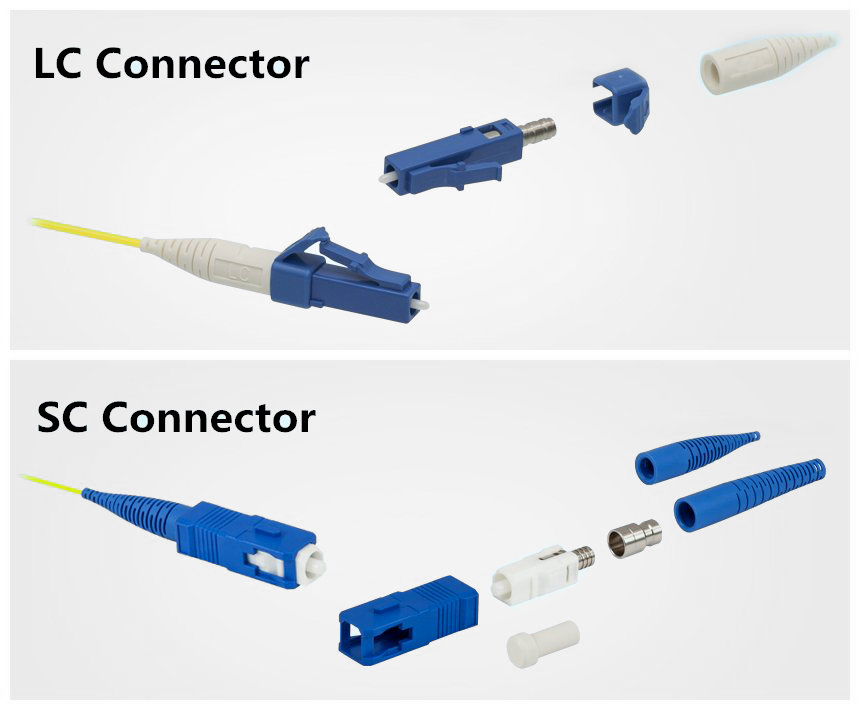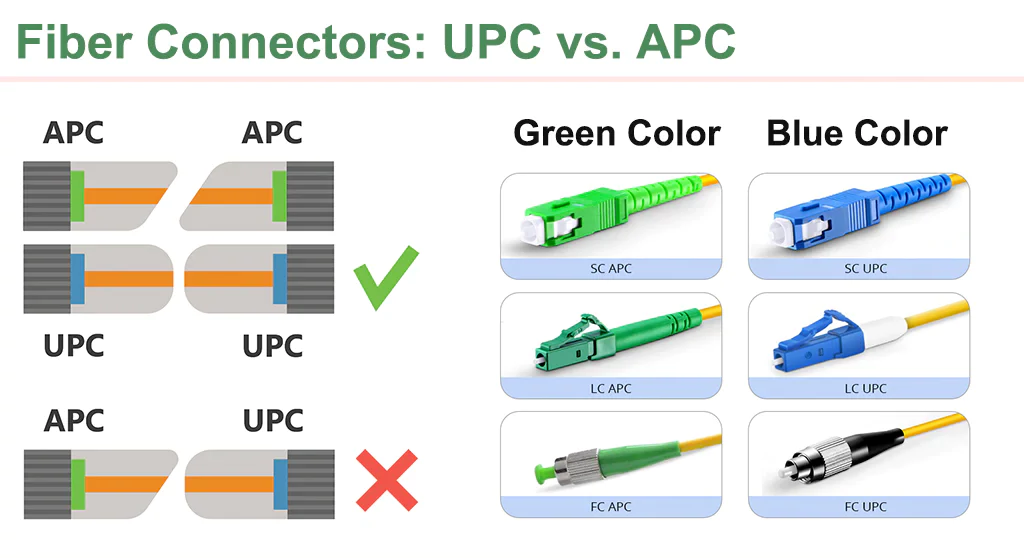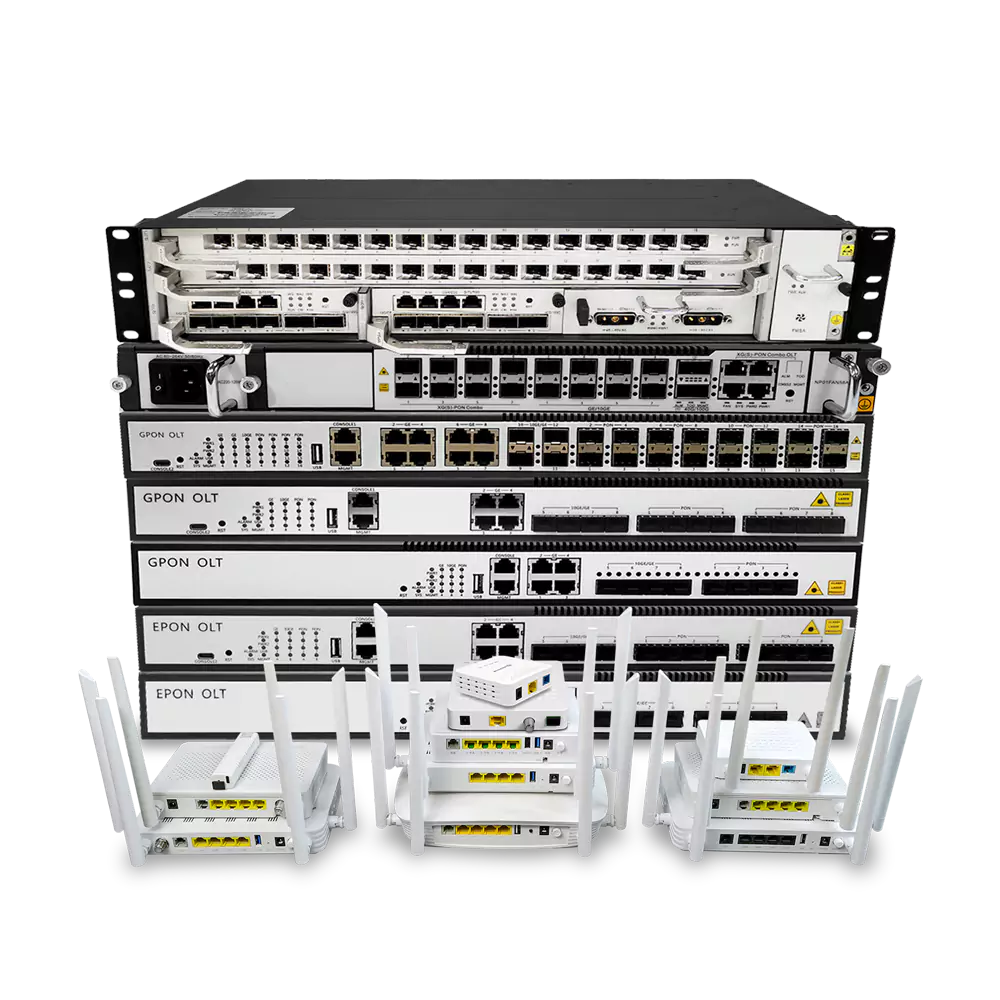1. LC and SC (Fiber Connector Types)
- LC (Lucent Connector):
- A small form-factor connector with a 1.25mm ceramic ferrule.
- Ideal for high-density installations, such as data centers or optical switches.
- SC (Subscriber Connector or Square Connector):
- A standard-sized rectangular connector with a 2.5mm ceramic ferrule.
- Known for its stability and commonly used in telecommunication and fiber optic networks.

2. UPC and APC (Fiber Endface Polishing Types)
UPC (Ultra Physical Contact):
- Characteristics:
- Ultra-smooth, flat-polished endface with no angle.
- Low insertion loss (< 0.3 dB) and moderate return loss (> 50 dB).
- Suitable for both single-mode and multimode fibers.
- Applications:
Commonly used in fiber optic sensing, communications, and networks where minimal return loss is acceptable.
APC (Angled Physical Contact):
- Characteristics:
- Polished endface with an 8° angle, reducing back reflection by deflecting light away from the source.
- Similar insertion loss to UPC but much lower return loss (> 60 dB).
- Applications:
Ideal for long-distance fiber optic communication, passive optical networks (PON), and scenarios where back reflection needs to be minimized.

3. LC SC and UPC APC Combinations
- LC UPC: Small connector with UPC polishing; commonly used in high-density setups requiring low reflection.
- LC APC: Small connector with APC polishing; suitable for high-performance, low-reflection applications such as long-distance transmission.
- SC UPC: Standard-sized connector with UPC polishing; widely used in LANs and general fiber communication.
- SC APC: Standard-sized connector with APC polishing; preferred for telecommunications and long-haul transmission with stringent return loss requirements.
4. Comparison Summary
| Feature | UPC | APC |
|---|---|---|
| Endface Angle | Flat (no angle) | 8° Angled |
| Insertion Loss | < 0.3 dB | < 0.3 dB |
| Return Loss | > 50 dB | > 60 dB |
| Applications | General fiber networks | Long-distance, sensitive to reflection |
The choice of LC or SC, and UPC or APC, depends on the specific performance requirements of your optical network. Let me know if you need further clarification!

